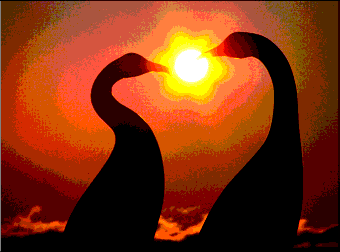36. DNA and Proteins
DNA cannot function without hundreds of preexisting proteins,a but proteins are produced only at the direction of DNA.b Because each needs the other, a satisfactory explanation for the origin of one must also explain the origin of the other.c Therefore, the entire manufacturing system—and its products—must have come into existence simultaneously. This implies creation.
Some of these necessary proteins decode the DNA, store DNA (histone spools), transcribe DNA into messenger RNA, assemble proteins (ribosomes), and protect DNA and its products (cell membranes).d These systems, present in each cell, are extremely complex.

Figure 17: Male and Female Birds. Even evolutionists admit that evolution seems incompatible with sexual reproduction. For example, how could organisms evolve to the point where they could reproduce before they could reproduce?
One of the most studied proteins in mammals, including humans, is called p53. It binds to thousands of DNA sites and influences cell growth, death, and structure. It is involved in fertility and early embryonic development. It also stifles cancers by repairing DNA, suppressing tumors, and killing genetically damaged cells.e How could DNA have survived unless p53 and its many functions already existed?
In each human, tens of thousands of genes are damaged daily by radiation, toxins, strand breaks, etc. ! f Also, when a cell divides, its DNA is sometimes copied with errors. Every organism has machinery that locates g and repairs damaged and mistranslated DNA.h Without such repair systems, the organism would quickly deteriorate and die. If evolution had happened, each organism would have become extinct before these complex DNA repair mechanisms could evolve.
In humans, 2000 genes are “indispensable for viability. They are required for basic cellular functions such as cell division, transcription, translation, DNA replication, cycle control, and fundamental metabolism.” After only 1999 of these essential genes had evolved, what would have happened? Extinction! Human evolution would have had to start all over again.i